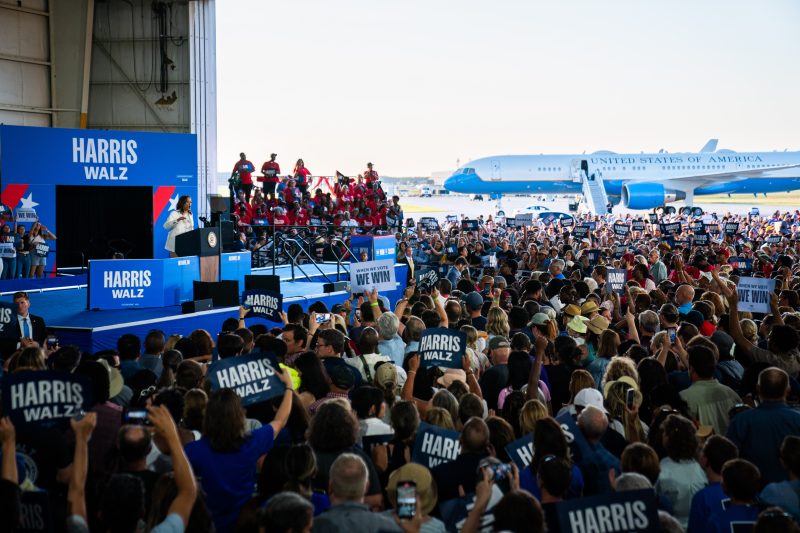
Trump’s Baseless Attack: Accusing Harris Campaign of Fake AI Crowd Images
In a recent development that has raised eyebrows across the political landscape, former President Donald Trump has falsely accused the campaign of Vice President Kamala Harris of fabricating AI-generated crowd photos. The claims made by Trump, known for his provocative statements and often controversial remarks, have brought the spotlight back on the dynamic intersection of politics and technology.
The genesis of the controversy lies in a series of images circulated by the Harris campaign, which purportedly showcase large crowds of supporters at various campaign events. Trump, never one to shy away from expressing his opinions, took to social media to denounce these images as fake and claimed that they were created using artificial intelligence. He went further to suggest that the Harris campaign was attempting to mislead the public and create a false illusion of popular support.
The implications of Trump’s allegations are far-reaching, touching on issues of authenticity, credibility, and the evolving role of technology in shaping public perception. In an era where visual media holds immense power and influence, the ability to discern between genuine content and manipulated imagery has become increasingly important.
The use of AI-generated content in political campaigns is not entirely unheard of, with some strategists leveraging advanced technologies to enhance their messaging and outreach efforts. However, the accusation leveled by Trump against the Harris campaign represents a new frontier in the realm of political disinformation.
It is essential to approach such claims with a healthy dose of skepticism and critical thinking. In an age where misinformation and fake news are rampant, the need for vigilance and scrutiny is more pronounced than ever. As citizens and consumers of information, we must exercise discernment in evaluating the veracity of the content we encounter, particularly in the context of high-stakes political campaigns.
The incident serves as a poignant reminder of the power dynamics at play in the digital age, where the lines between reality and fiction can easily blur. It underscores the importance of media literacy and the need to foster a culture of accountability and transparency in the dissemination of information.
As the debate surrounding the authenticity of the crowd photos continues to unfold, it is imperative for stakeholders on all sides to engage in constructive dialogue and uphold the principles of integrity and truthfulness. In a world where perception is often reality, the quest for authenticity remains an enduring challenge that requires constant vigilance and commitment to upholding ethical standards.
